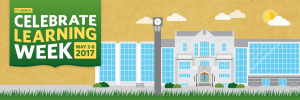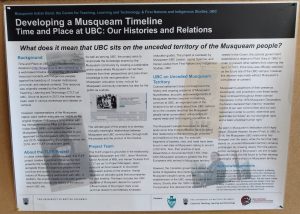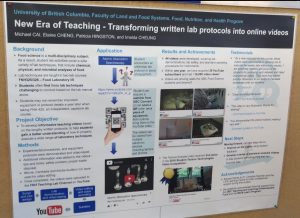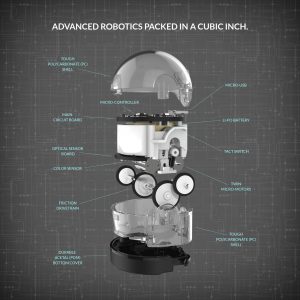Woo! Learning
During Celebrate Learning Week (May 2 – May 8), I had the opportunity to participate in various workshops and presentations as well as the keynote presentation by Dr. Roddy Roediger.

Courtesy of CTLT, UBC
I started my sessions off with a Grad student presentation on Universal Design for Learning. It was interesting how they chose to lead the class through the lens of diversity, which really put everyone in a framework for investigating their own practice. I enjoyed the opportunity to interact with instructors from all over campus, and other educators from different backgrounds.
Dr. Roddy Roediger’s work on retrieval practice was very interesting, as it challenged many preconceptions on students’ preparations for assessment or “studying”. His message really made me think of “study smart, not hard”. What I saw was the value of teaching meta-cognitive skills in the classroom, and how important it is to teach students how to study. I looked back at my own practice, and I can definitely see where I can introduce more guidance when it comes to studying. I’ve always modeled a practice -> self assessment approach to studying in class (providing extra resources, questions, guiding questions, checklists), but have not created opportunities to teach studying. I have had students think “If I study hard for this test, I can get an A”, so the desire is there. Going forward, as I already have a “get to know you” sheet at the start of the year (to assess the diversity of learners in my classroom), I would like to add a “how do you study” question so that I can help students target and understand how they learn.
 Picture by John Lim, used with permission
Picture by John Lim, used with permission
Following the Keynote, I had the opportunity to visit the TLEF (Teaching and Learning Enhancement Fund) projects poster showcase. It was very rewarding to interact and learn from the many of the various projects on campus. I really enjoyed Developing a Musqueam Timeline, and Transforming written lab protocols into online videos, among the many presentations on site.
 Picture by John Lim, used with permission
Picture by John Lim, used with permission



